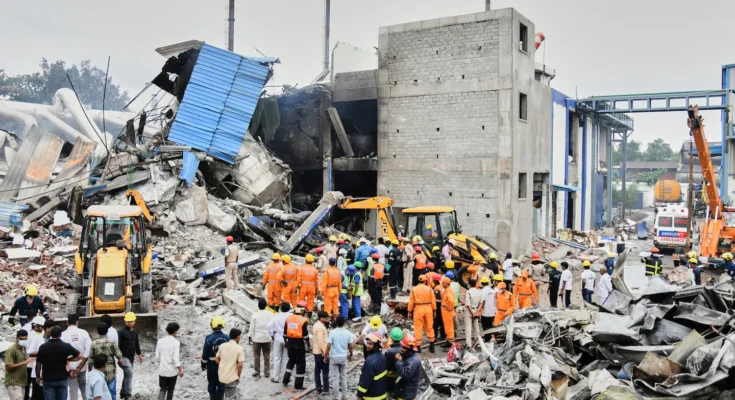Great! Here’s your SEO-optimized version of the blog post, integrating the keywords naturally throughout the text. This version is suitable for posting directly to a news blog or website (e.g., WordPress, Medium, or Substack):
Hyderabad Factory Explosion at Sigachi Industries Kills 42: Investigations Underway
At least 42 people have died and over 25 were injured following a massive explosion and fire at Sigachi Industries’ pharmaceutical plant near Hyderabad, India, on June 30, 2025. The incident, now one of the deadliest industrial accidents in India this year, has raised serious concerns about chemical plant safety and regulatory oversight in the country.
What Caused the Sigachi Industries Explosion?
The blast occurred in the reactor area of the plant, where microcrystalline cellulose—a key pharmaceutical ingredient—was being processed. Investigators believe a pressure buildup in a spray dryer unit may have triggered the explosion. An air handling system malfunction is suspected, though a detailed investigation is still underway.
The Hyderabad factory fire quickly engulfed the multistorey building, trapping dozens of workers—many of whom were migrant laborers from Telangana and neighboring states—under the rubble.
Rescue teams from the National Disaster Response Force (NDRF), local fire services, and police were deployed immediately. However, first responders encountered a critical delay: the factory’s hazardous materials display was blank, making it difficult to assess the risks on-site.
Government Response and Legal Action
The Telangana state government has called the explosion a “tragedy of unprecedented scale” and formed a five-member inquiry committee to investigate potential violations of industrial safety protocols.
Following a complaint from the son of one of the deceased workers, the Patancheru police have officially registered a case against Sigachi Industries for alleged negligence.
Prime Minister Narendra Modi expressed condolences and announced central compensation for the victims’ families. Telangana’s Chief Minister Revanth Reddy visited the site, promising additional state compensation and ordered a comprehensive audit of all chemical factories across the state.
“Our immediate priorities are the safety and recovery of those injured, supporting their families, and cooperating fully with the investigation,” said Bhavani Chidambaranathan, an executive at Sigachi Industries. He also noted that compensation payments are currently being arranged.
Industrial Safety in India Under Scrutiny
The Hyderabad factory explosion isn’t an isolated event. Just a day later, on July 1, an explosion at a fireworks factory in Chinnakamanpati near Sivakasi, Tamil Nadu, killed four people and injured five more. Sivakasi, a major fireworks manufacturing hub, has seen multiple fatal factory explosions in recent months—including two incidents in April.
These back-to-back disasters highlight the ongoing challenges India faces in enforcing workplace safety standards, particularly in hazardous industries such as pharmaceuticals and fireworks manufacturing.
The Sigachi Industries blast serves as a wake-up call for stricter enforcement of safety regulations across India’s rapidly growing industrial sectors. As the nation mourns the lives lost in this Hyderabad factory fire, there’s growing pressure on both companies and government bodies to ensure that such tragedies are not repeated.

